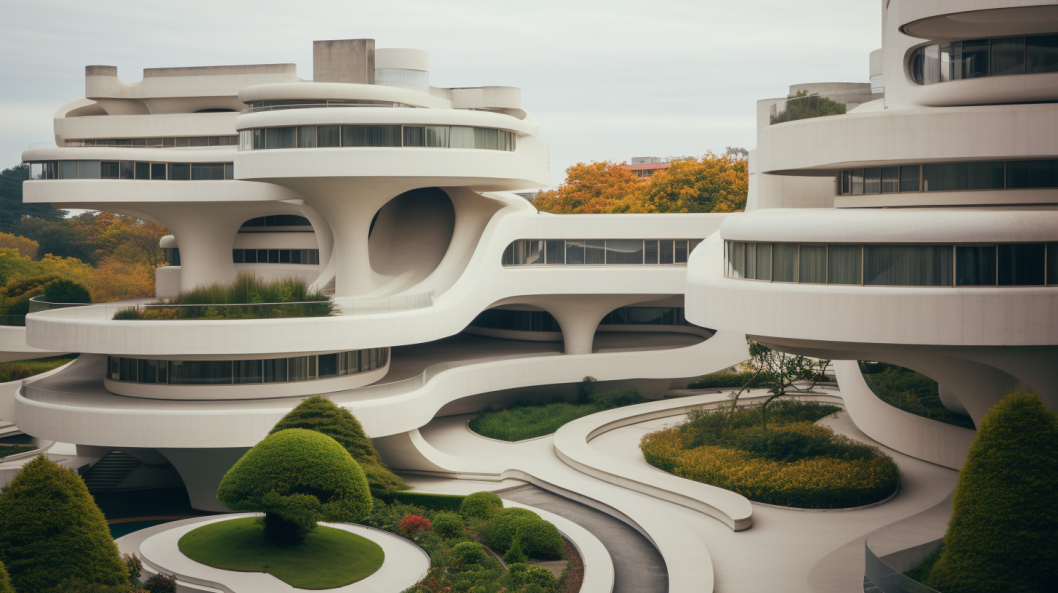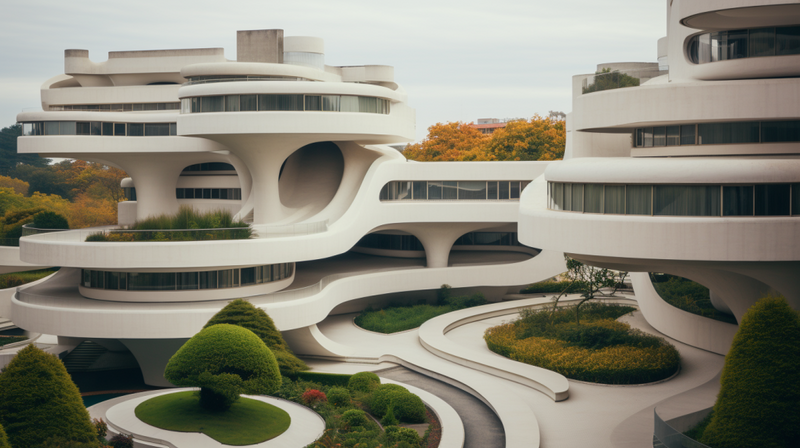The Curvy Revolution: How Complex Shapes are Changing Modern Design
As we look at how design strategies have evolved, a new wave of intricate forms and shapes has brought about something called the Curvilinear Revolution. This idea fundamentally explores and admires complexity, weaving it smoothly into modern design methods. From the sweeping curves of the Guggenheim Museum in Bilbao to the elliptical elegance of London’s Gherkin, curvy shapes have taken over straight, simple geometries, representing many symbolic, aesthetic, and practical qualities.
A Bit of History and the Shift
Historically, modernism, especially in architecture and design, favored straight and simple shapes. They were easier to build and calculate, and used fewer materials, which were big incentives. The Bauhaus Movement, for instance, loved simplicity and function, setting a style that was dominant for most of the 20th century.
The move from the plain shapes of modernism to embracing curvy, complex designs marks a significant change. With advances in technology, particularly in computer design tools and manufacturing processes, creating complex, curvy forms became more achievable and less limited by technical difficulties.
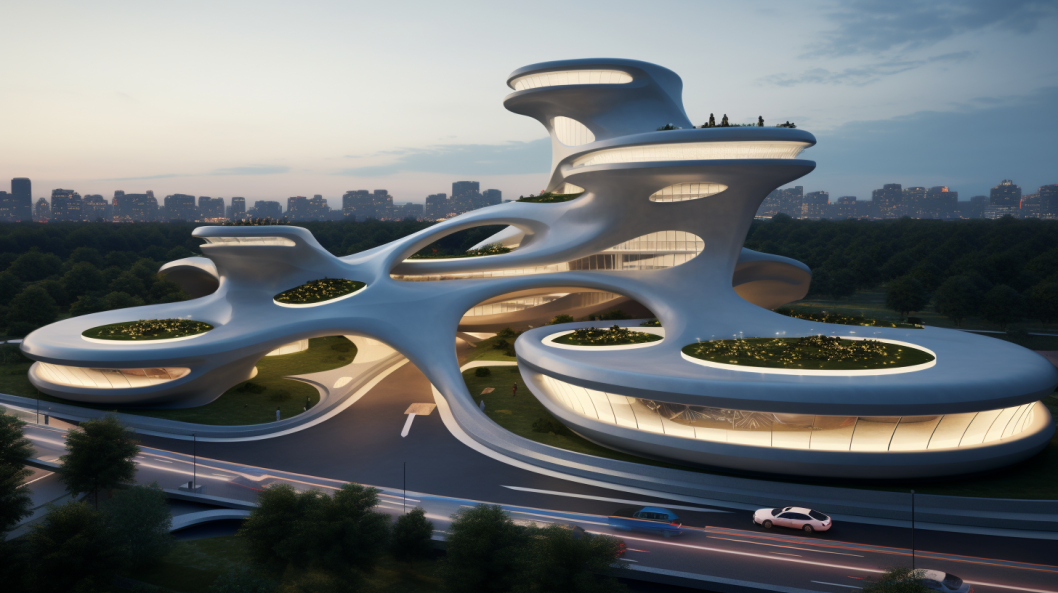
The Meaning and Beauty of Curves
Curvy designs bring forth a range of symbols and meanings. They suggest a sense of fluidity, movement, and naturalness, often standing in stark contrast to the rigid, unyielding straight lines and sharp angles of traditional structures. These forms can imply adaptability, evolution, and a break from old ways, offering a new visual language that communicates innovation and forward-thinking.
The beauty that comes from curvy shapes often evokes emotional responses like elegance, flow, and dynamism. There's a natural grace to curves, providing a visual ease that is both pleasing and captivating to the eye, creating a gentle conversation between the structure and the person observing it.
Practical and Environmental Benefits
Beyond symbolism and aesthetics, curvy forms bring real functional and environmental benefits. Curved surfaces can improve aerodynamics (how well something moves through air), reduce wind pressure, and optimize energy performance by minimizing direct sunlight. Moreover, from a city planning perspective, these forms can create unique spatial experiences, shaping spaces that are both useful and deeply beautiful.
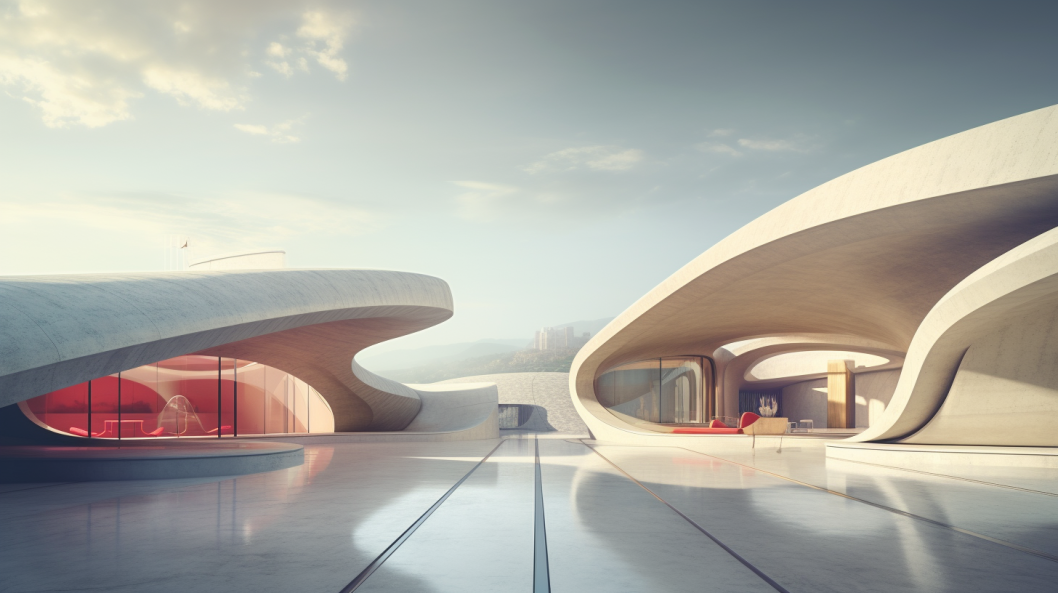
Technology Driving the Curvy Revolution
The ability to create complex shapes is deeply connected to technological advancements. Computational design, digital fabrication, and new material science have been key enablers in the curvy revolution. Sophisticated computer programs (algorithms) can now optimize shapes for structural efficiency, environmental performance, and aesthetic impact, allowing designers to manipulate shapes with amazing control and precision.
Furthermore, advancements in BIM (Building Information Modeling), 3D printing, and robotic construction have made it possible to bring these complex shapes from computer designs into physical reality. Such technologies allow for a level of detail and precision that was previously unimaginable, enabling designers to push the boundaries of what is possible.
Challenges and Criticisms
Despite the awe-inspiring possibilities, the curvy revolution faces some criticism. Questions about cost, material usage, and practicality often come up. Is the pursuit of complexity taking attention away from other critical aspects like sustainability, social impact, and accessibility in design? This sparks a debate on whether shape should follow function, or if the symbolic and aesthetic values of curvy designs justify the means.
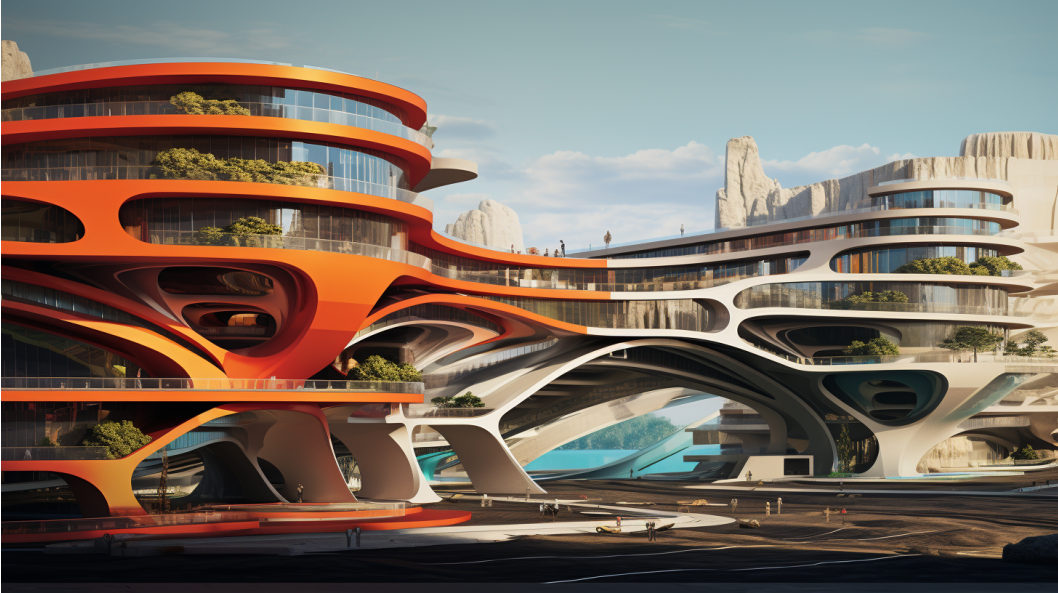
Beyond the Curve - What's Next?
The curvilinear revolution highlights an important moment in design where complexity is not just accepted but celebrated. The blend of aesthetics, symbolism, and technology creates a rich picture where designers sculpt our built environment with a freedom of expression that was once limited by the linear rules of the past.
However, as we ride this curvy wave, it's crucial to navigate with a careful balance. We must ensure that the complexity doesn't overshadow usefulness, sustainability, and social responsibility. Curvy design, while a powerful strategy, must be used wisely, creating paths that not only mesmerize with form but also resonate with purpose, ethics, and inclusivity.
The future of design therefore lies in harnessing the curvy revolution within a framework that respects both the art and science of creating spaces. This ensures that the complexities of our designs reflect the multi-faceted nature of our societies and environments.
